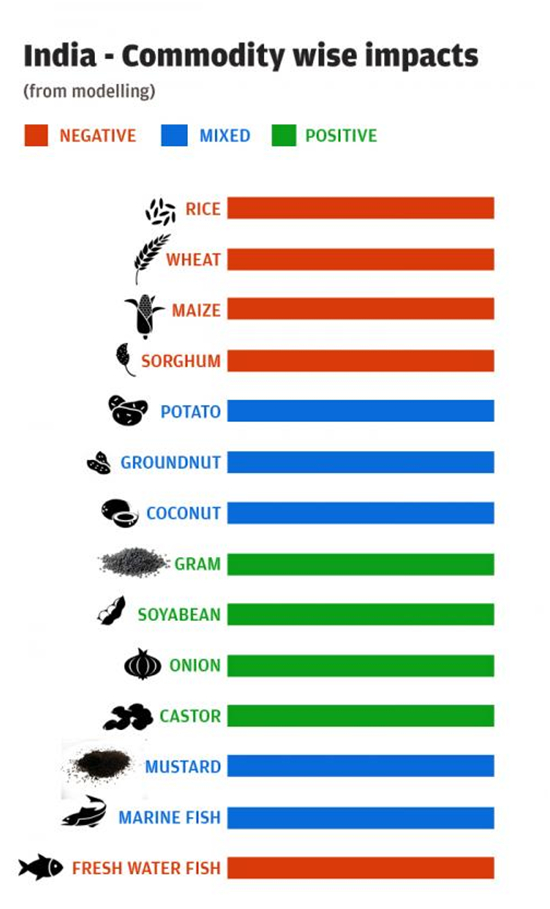Climate Change: Impact on Food Security in India
A Multifaceted Crisis:
- Impact of Climate Change,
- Rural Struggles & Livelihoods are migrating to urban areas,
- Unsustainable Agriculture,
- Technological Gap,
- Underutilized Land
Irregular monsoon pattern in #India due to #ClimateChange is causing agricultural land to shrink & the available land might also become unsuitable for the present crops. This affects the purchasing power & livelihood of rural poor causing #Food insecurity of the vulnerable groups.
Impact of Climate change
Impact of climate change on agriculture leads to 1.5 per cent loss in India’s GDP.
By 2030, rice and wheat are likely to see about 6-10 per cent decrease in yields. Rising temperature affects flowering and leads to pests and disease buildup. Flood and excess rain over a short duration of time cause extensive damage to crops.
Extreme weather events have caught attention of agrarian experts and scientists alike and they are now focusing on natural farming to arrest the impacts of climate change.
“Climate change affects all the three aspects of food security: availability, access and absorption.
When production decreases, availability of food decreases. Climate change hits poor the most. They don’t have income to buy the food, so their access to it is affected. This, in turn, has an impact on health and affects absorption.”
It is estimated that the climate change has about 4-9 per cent impact on agriculture each year. As agriculture contributes 15 per cent to India’s GDP, climate change presumably causes about 1.5 per cent loss in GDP.
How different crops react to climate change
Highlighting the impact of climate change on crops, he explained how rice, wheat, maize and sorghum are the worst hit by this phenomenon. By 2030, rice and wheat are likely to see about 6-10 per cent decrease in yields. Some of the crops like potatoes, soybean, chickpea and mustard, on which climate change will have a neutral or positive impact.

